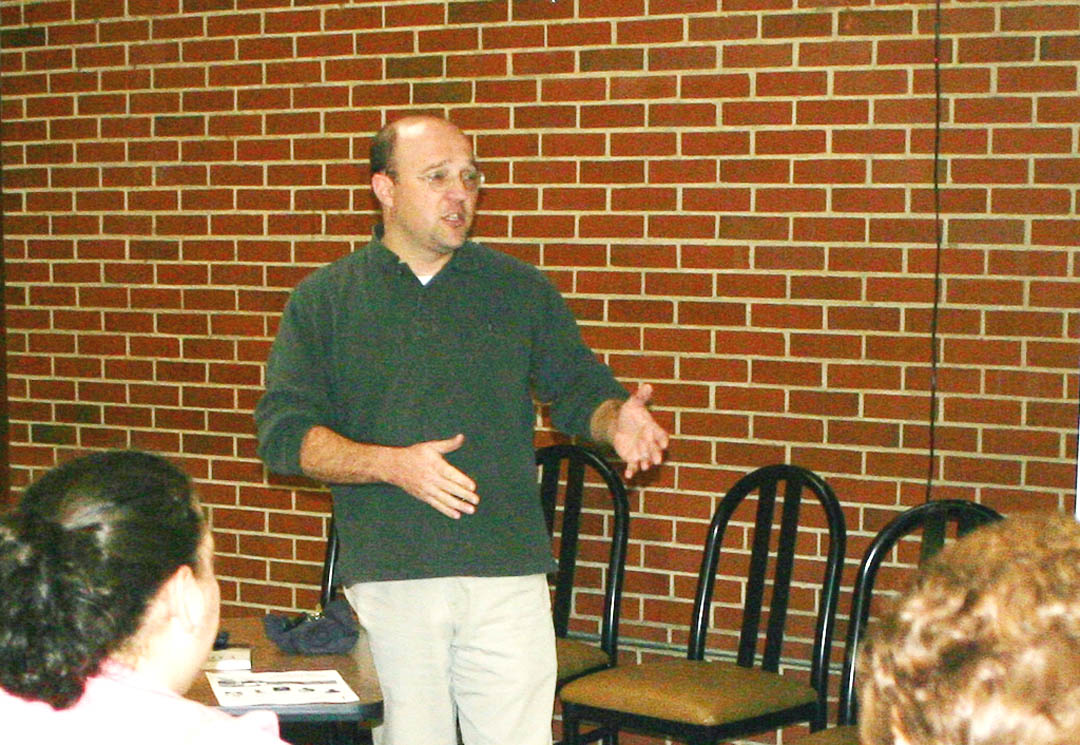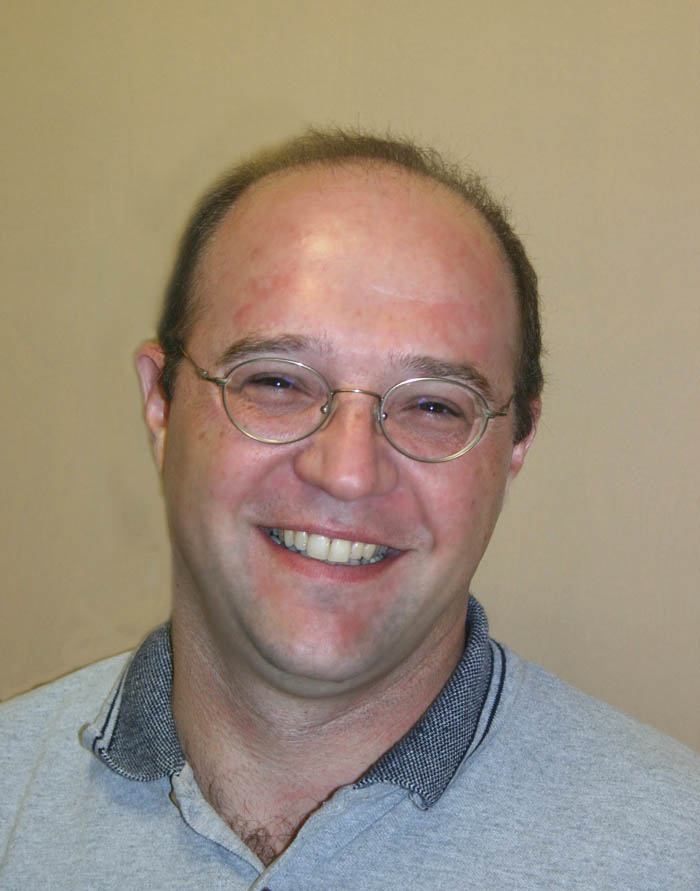College News
World War I — beginning of the modern world
Notice: This article is older than 12 months. Names, contact information, programs, titles, etc. might have changed. If you have any problems please call the main college number, 1-800-682-8353, and we will be happy to direct you accordingly.

click image to enlarge ⊗
Dr. Sal Mercogliano, history instructor at Central Carolina Community College’s Lee County Campus, ... (more)
11.11.2008 • Admin, Faculty & Staff • Special Events
SANFORD - What was the greatest terrorist act in history?
Not the Sept. 11, 2001 attack on the United States by Islamist terrorists. Not the Japanese attack on Pearl Harbor on Dec. 7, 1941.
According to Dr. Sal Mercogliano, Central Carolina Community College history instructor, the greatest terrorist attack in history occurred on June 28, 1914. On that date, Archduke Franz Ferdinand, heir to the Austro-Hungarian Empire, and his wife, Sophie, were assassinated by the Black Hand, a Serbian terrorist group, while visiting Sarajevo, Bosnia.
That assassination triggered World War I, costing 11 million lives. The movements of troops and populations, and the unsanitary conditions associated with the war, provided an environment for the 1918 Spanish Flu epidemic, which killed about 50 million people worldwide.
World War I set the stage for World War II, which cost 72 million military and civilian deaths. Communism began its bloody march across the world stage as nations fought in World War I. The impact and aftermaths of the war echoed through the Cold War years.
"The world we're in today is a direct result of World War I," Mercogliano told a group of the college's employees and students gathered to hear his Veterans Day lecture Nov. 11.
World War I ended with the signing of an armistice at the 11th hour on the 11th day of the 11th month, Nov. 11, 1918. Formerly known as Armistice Day, it is now called Veterans Day, honoring all those who have served in the nation's armed forces.
The United States did not enter World War I until 1917, when Germany began attacking and destroying American shipping with their U-boats, submarines that gave them a deadly advantage over commercial shipping vessels. On April 2, 1917, President Woodrow Wilson argued before Congress the case for a declaration of war against Germany. On April 4, Congress agreed. A military draft was instituted and the U.S. military exploded from 100,000 men in arms to a 5-million member American Expeditionary Force.
Mercogliano's lecture commemorating the 90th anniversary of the signing of the Armistice, focused on five of the soldiers in the war: Gen. John J. Pershing, Capt. Harry S. Truman, Sgt. Alvin York, Major Charles Whittlesey, and Sgt. Henry Lincoln Johnson. They were representative of all those who served.
Gen. John J. Pershing
President Woodrow Wilson was so impressed with then-Capt. John J. Pershing that he promoted him to general and gave him command of the American Expeditionary Force. Pershing proved to be a brilliant commander, leaving a legacy of military organization and tactics that were used in future wars.
In the fall of 1918, he led the American forces in the Meuse-Argonne Offensive near Verdun, France, the largest battle in American history, with more than 1 million men deployed. By the time the Germans were defeated in that battle, 100,000 American soldiers were wounded and 26,000 had been killed.
Pershing trained the military leaders that would lead the nation in World War II, including future generals Dwight David Eisenhower, George S. Patton, Douglas MacArthur, and George C. Marshall. He died in 1948, the only military commander besides George Washington to hold the title of General of the Armies.
Capt. Harry S. Truman
Capt. Harry S. Truman's eyesight was so bad that he had to memorize the eye chart to pass the exam to get in the military. He proved a capable leader of a field artillery battery that provided support for Patton's tank unit. After the war, he failed in business but was elected to the U.S. Senate from Missouri. His war experiences made him an outspoken opponent of waste in government military contracts. He became the vice president in 1944 and president when Franklin Delano Roosevelt died in April 1945.
He is best remembered for ordering the dropping of atomic bombs on Japan to bring an end to World War II in the Pacific Theater. Mercogliano said Truman probably never regretted that decision because, having experienced war first-hand, he would have done anything to spare America's soldiers as much suffering and death as possible.
Major Charles Whittlesey
Major Charles Whittlesey, of New York City, commanded a battalion made up of immigrants. During the Meuse-Argonne Offensive, he led 554 men on an advance through German lines. So successful were they in their advance that the other units lost track of them and they became known as the Lost Battalion. They were lost for five days, but kept fighting. By the time the battle was over, Whittlesey had lost 163 of his men. He was promoted to commander and celebrated as a hero for his battalion's stand. The loss of so many of his men continued to haunt him and, in 1921, he committed suicide.
Sgt. Alvin York
Sgt. Alvin York was a conscientious objector when World War I broke out. He was a born-again Christian and considered the taking of life wrong. It was only when his company commander was able to convince him that the fight against Germany and its allies was a fight against evil, that York agreed to go. A crack marksman, York is best remembered for infiltrating behind German lines and, by himself, wiping out a machine gun nest. He and 16 other soldiers captured 132 German troops and were instrumental in saving the Lost Battalion during the Meuse-Argonne Offensive. For this, he was awarded the Medal of Honor.
After the war, he returned home to Tennessee a hero. Over the years, he opened an agricultural school and a Bible school. He wanted to enlist in World War II, but was too old, so he devoted himself to bond drives to raise money for the war. York was immortalized in a 1941 motion picture starring Gary Cooper.
Sgt. Henry Lincoln Johnson
Sgt. Henry Lincoln Johnson, an African-American, was a member of the 369th Infantry Regiment, known as the Harlem Hell Fighters, the most decorated regiment in World War I. Like many African-Americans, he agreed with what W.E.B. Dubois said about African-American involvement in the war, "If this is our country, then this is our war."
Johnson's regiment was assigned to fight under French command. At one point, German soldiers attacked him and a few others at an outpost and the battle became hand-to-hand combat. He was severely wounded, but was able to kill several of the enemy, bringing an end to the attack. For his bravery in this and other instances, Johnson became the first American to receive the Croix de Guerre, a French military decoration for acts of heroism in combat.
Johnson returned home with high hopes of promoting equality for African-Americans in the United States. He became embittered at the lack of success. In 1929, he died in a veterans' hospital and was buried at Arlington National Cemetery.
Categories
- Admin, Faculty & Staff Category
- Arts & Entertainment Category
- Clubs Category
- College & Community Category
- College General Category
- Continuing Education Category
- Curriculum Programs Category
- Distance Education Programs Category
- Facilities/Buildings Category
- Finances Category
- Foundation Category
- Graduations Category
- Lee Early College Category
- NCCCS Category
- SGA Category
- Special Events Category
- Sports Category
- Students/Graduates Category
- Uncategorized Category
Archives


